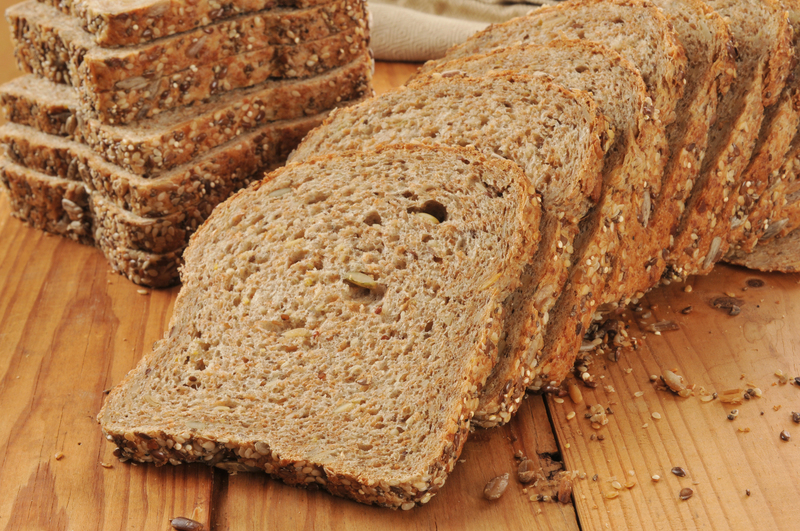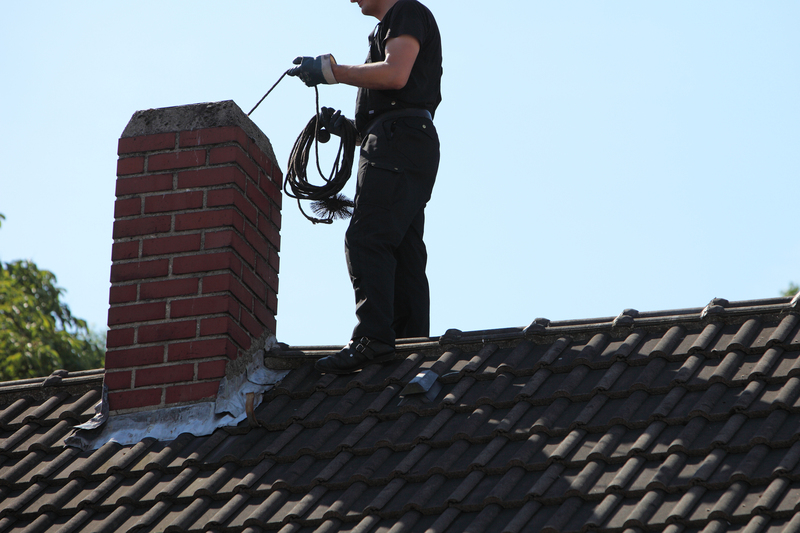Expert Tips for Cleaning Stubborn Stovetop Residue
Posted on 22/05/2025
Expert Tips for Cleaning Stubborn Stovetop Residue
A clean stovetop is the cornerstone of a healthy and inviting kitchen. However, even the most meticulously maintained kitchens can fall victim to stubborn stovetop residue. Whether you're struggling with burnt-on spills, greasy splatters, or years of accumulated grime, knowing the right techniques can make all the difference. In this comprehensive guide, we'll share expert tips for cleaning stubborn stovetop residue--covering every type of stovetop and every kind of mess.
Understanding Stovetop Residue: What Causes Those Tough Messes?
Stovetop residue is inevitable, especially in busy homes. Whether it's a midnight pasta sauce overflow or the splattered oil from stir-frying, these messes can quickly become eyesores and even fire hazards if left untreated. Residue usually contains a combination of burnt food, grease, and sometimes even mineral deposits, particularly if you have hard water.
- Grease Splatters: Common when frying foods or cooking with oils.
- Burnt-on Food: Results from overflows or spills that are not promptly wiped up.
- Mineral Deposits: Especially likely if you frequently boil water and have hard water in your area.
- Sugar Spills: Can caramelize and become very stubborn, especially on glass stovetops.

Preparation: What You'll Need to Clean Stubborn Stovetop Residue
Before tackling those stubborn stovetop stains, it's essential to gather the right supplies. Having the correct tools on hand can save you time and prevent damage to your stovetop's surface.
- Soft Microfiber Cloths or Sponges (avoid abrasive pads on glass and ceramic)
- Baking Soda for gentle abrasion
- White Vinegar for cutting grease
- Dish Soap (preferably degreasing)
- Razor Blades or Scrapers (only for glass stovetops and used carefully)
- Plastic Scrubbers or Brushes
- Commercial Stovetop Cleaners (optional, for extra-tough jobs)
- Protective Gloves to keep your hands safe from harsh chemicals
Step-by-Step Guide: How to Remove Stubborn Residue from Any Stovetop
1. Gas Stovetops: Cleaning Grates, Burners, and Surfaces
Gas stovetops are usually made up of several components: grates, burner caps, and the main cooktop surface. Each requires a slightly different approach.
- Remove Grates and Burner Caps: Lift them off gently and soak in a sink filled with hot, soapy water. Allow them to soak for at least 20-30 minutes to loosen tough, baked-on residue.
- Scrub Grate and Burner Caps: Use a stiff brush or non-abrasive scrubber. For burnt-on gunk, make a paste of baking soda and water, apply, let sit for 15 minutes, then scrub vigorously.
- Clean the Main Surface: Wipe away loose debris. For sticky or greasy residue, spray a solution of equal parts vinegar and water, let sit, then wipe clean.
- Addressing Stubborn Spots: Use a paste of baking soda to target tough stains. Gently scrub with a soft cloth or sponge.
Always ensure grates and burner caps are completely dry before reassembling to prevent rust or improper burner ignition.
2. Electric Coil Stoves: Lifting Off Burnt Residue
Electric coil stovetops can be tricky, especially since food sometimes burns beneath the coils.
- Remove the Coils: Unplug gently (make sure the stove is off and cool). Set aside.
- Clean Drip Pans: Remove pans and soak in hot, soapy water. Use a combination of baking soda and a little dish soap for stubborn messes.
- Scrub Under-Coil Areas: Wipe with a damp sponge. For caked-on electric stovetop residue, sprinkle baking soda, spray with vinegar, let fizz, then scrub.
Never submerge electric coils in water. Simply wipe them down with a damp cloth if necessary.
3. Glass and Ceramic Stovetops: Scratch-Free Cleaning Tips
Glass and ceramic smooth-top ranges are beautiful but prone to visible stains and smears. Harsh tools can cause unsightly scratches, so always use gentle methods.
- Wipe Loose Debris: Start with a soft cloth or paper towel.
- Sprinkle Baking Soda: Dampen the area first, then apply a generous amount.
- Spray with Vinegar: The fizzing action helps break down stubborn stovetop buildup.
- Lay a Hot, Moist Towel Over the Paste: Let sit for 10-15 minutes.
- Scrub Gently: Use a soft cloth to wipe away residue. For really stubborn spots, carefully use a razor blade held at a shallow angle, ensuring you don't gouge the surface.
Proven Home Remedies for Stubborn Stovetop Stains
If you prefer green cleaning or want to avoid harsh chemicals, try these proven home remedies for tough stovetop stains:
- Baking Soda + Vinegar: A classic solution for breaking down burnt food and grease.
- Lemon Juice: Natural acidity lifts stains and neutralizes odors.
- Hydrogen Peroxide + Baking Soda: Powerful for especially stubborn or baked-on stains. Mix into a paste, apply, leave for 15 minutes, and scrub gently.
- Dish Soap + Hot Water: Sometimes simple solutions are best. Use a high-quality degreasing dish soap with the hottest water possible for maximum effect.
When to Use Commercial Stovetop Cleaners
While home remedies are often effective, certain stovetop residues require stronger intervention. Commercial stovetop cleaners are specially formulated for grease and burnout but should be used with care.
- Read Labels Carefully: Ensure compatibility with your stovetop type (glass, ceramic, gas, or electric).
- Spot-Test First: If unsure, test on a small, inconspicuous area to prevent damage or discoloration.
- Ventilate: Open windows or use fans, as some cleaners emit strong fumes.
- Rinse Thoroughly: After using commercial products, clean the surface with a damp cloth to remove any residue that might impact food taste or surface safety.
Tips for Preventing Stubborn Stovetop Residue in the Future
The best way to avoid caked-on stovetop messes is with daily maintenance. Here are essential prevention tips:
- Wipe Up Spills Immediately: The sooner you tackle a spill, the less likely it is to become a stubborn stain.
- Use Splatter Guards: When frying or sauteing, use guards to prevent oil from escaping onto the surface.
- Deep Clean Weekly: Schedule a weekly cleaning session for more thorough attention.
- Line Drip Pans: Disposable liners under electric coils catch spills and make for fast cleanup.
- Use the Right Cookware: Overfilled pots or warped pans are more prone to causing spills. Choose stable, appropriately sized cookware.
- Don't Let Boil-Overs Burn: As soon as you spot a boil-over, turn off the heat and wipe up the spill.
Incorporating these habits into your cooking routine means less scrubbing and sparkling results every day.
What to Avoid: Common Mistakes When Cleaning Stovetop Residue
Resist the urge to grab the steel wool! Here are key mistakes to avoid to protect your stovetop and achieve the best results:
- Avoid Abrasive Scouring Pads: Especially on glass and ceramic surfaces, which scratch easily.
- Don't Use Oven Cleaner (Unless Labeled Safe): Many are too harsh for stovetops.
- Never Clean While Hot: Always let the stove cool to prevent burns and avoid damage.
- Skip Excessive Water: Too much can seep into electrical components, leading to malfunctions.
- Not Reading the Manual: Different stovetop brands have unique materials or sealants; always glance through your user guide for cleaning dos and don'ts.

Frequently Asked Questions About Cleaning Stubborn Stovetop Residue
Can I use a razor blade on my glass stovetop?
Yes, but with caution. Hold the blade at a 45-degree angle and gently scrape residue--never dig in or use excessive force.
What if the stains don't come off with baking soda and vinegar?
If natural remedies don't do the trick, try a commercial stovetop cleaner, or mix baking soda with a little hydrogen peroxide for extra cleaning power.
How often should I deep-clean my stovetop?
A weekly thorough cleaning prevents baked-on residue buildup. Daily wipe-downs after cooking are highly recommended.
Is it safe to use bleach on my stovetop?
Generally, bleach is not recommended for most stovetops. It can discolor surfaces and doesn't effectively remove grease. Stick to targeted stovetop cleaners and natural solutions.
Conclusion: The Secret to a Sparkling, Residue-Free Stovetop
Cleaning stubborn stovetop residue doesn't have to be exhausting or damaging to your appliance. With the right techniques, materials, and expert stovetop cleaning tips, you can restore even the messiest stove to pristine condition. Remember: act quickly on spills, use gentle abrasives, and be consistent with your cleaning schedule. Your kitchen will not only look better, but it will also be a healthier and more enjoyable space for cooking and gathering.
Share your best stovetop cleaning hacks in the comments, and keep your kitchen shining like new!




